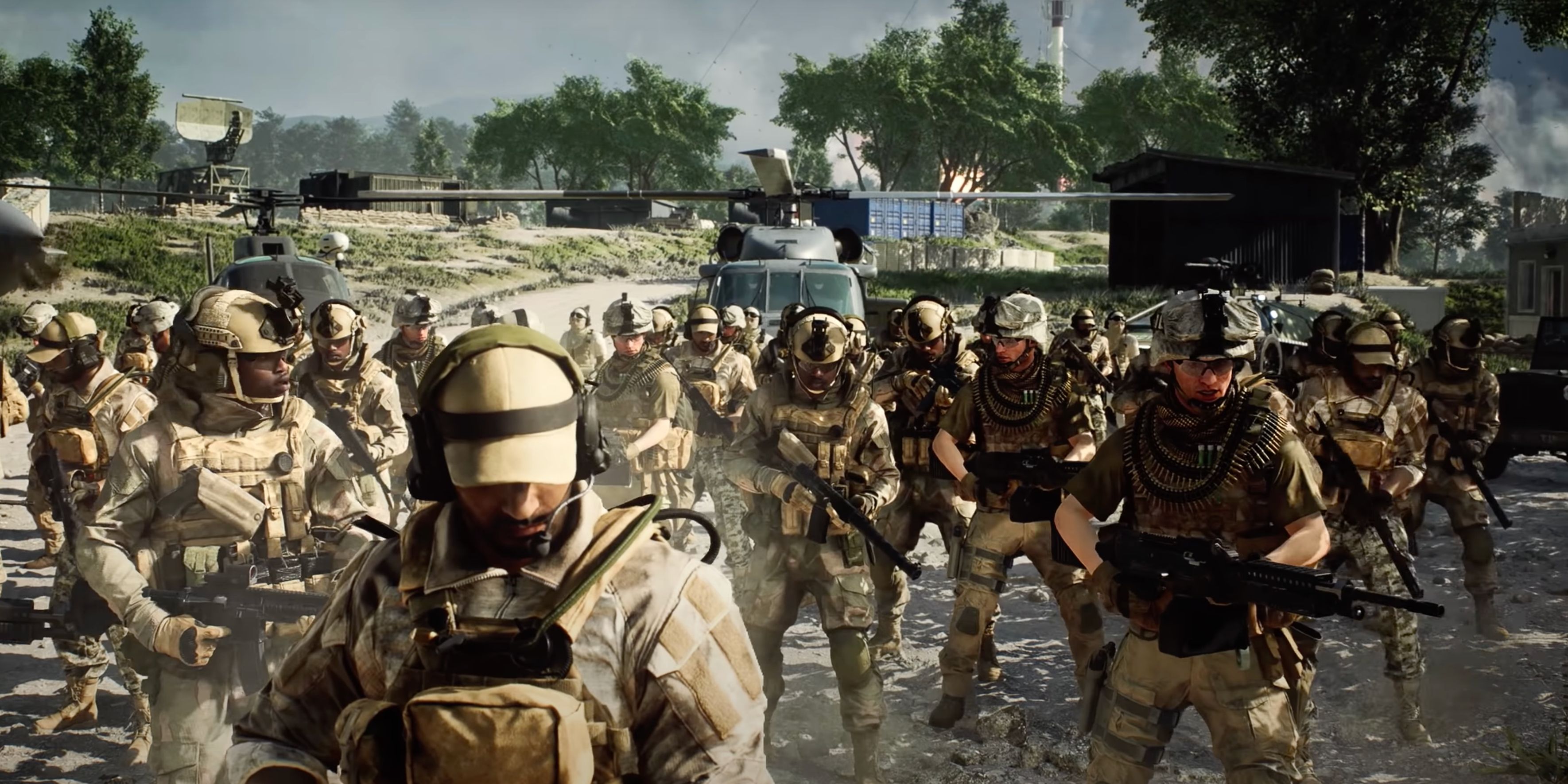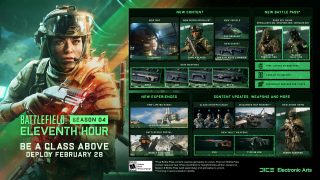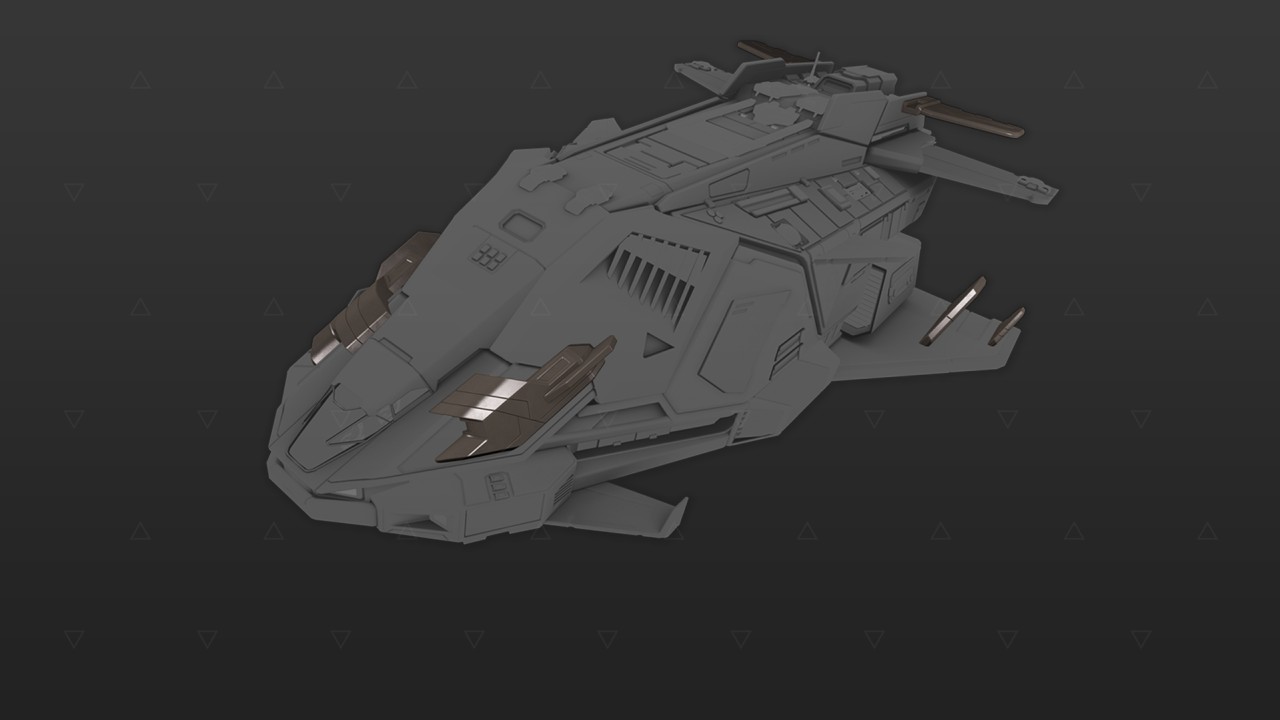Battlefield 2042: The Future of Warfare Unleashed
Introduction
Battlefield 2042 marks a bold new chapter in the long-running Battlefield franchise. Developed by DICE and published by Electronic Arts, this first-person shooter (FPS) takes players into a near-future setting filled with chaotic warfare, massive battles, and cutting-edge technology. Set against the backdrop of a world on the brink of collapse due to climate disasters and geopolitical chaos, Battlefield 2042 introduces players to a high-octane multiplayer experience unlike any other in the series.
Released in late 2021, the game had a rocky launch, facing criticism for bugs, missing features, and server instability. However, post-launch updates and seasons have significantly improved the experience, shaping it into a worthy successor to the beloved Battlefield legacy. In this article, we’ll delve into the game’s mechanics, maps, specialists, and the evolution of the franchise, providing a comprehensive look at what makes Battlefield 2042 a unique entry in the FPS genre.
The Setting: A World in Crisis
Battlefield 2042 is set in the year 2042, where severe climate change has plunged the world into chaos. Nations collapse, food and energy shortages run rampant, and millions become refugees. In response, two factions emerge: the U.S.-backed "No-Pats" (Non-Patriated) and the Russian-aligned forces, fighting for control of the remaining habitable land and resources.
Unlike previous titles with scripted single-player campaigns, Battlefield 2042 focuses entirely on multiplayer, using environmental storytelling and dynamic events to convey its narrative. Maps showcase the impact of climate disasters—raging sandstorms in Qatar, tornadoes sweeping across South Korea, and frozen landscapes thawing in Antarctica. These environmental hazards don't just serve as backdrops; they actively influence combat, forcing players to adapt on the fly.
Gameplay and Core Mechanics
At its core, Battlefield 2042 retains the large-scale warfare the franchise is known for while introducing significant changes to gameplay. One of the most notable shifts is the move away from conventional classes (Assault, Medic, Engineer, Recon) in favor of "Specialists"—unique characters with dedicated abilities and gadgets.
Each Specialist falls into broader roles (Assault, Support, Engineer, Recon) but brings distinct skills. For example:
- **Mackay** excels in verticality with his grappling hook.
- **Falck** acts as a combat medic with her healing pistol.
- **Boris** provides automated turret support.
- **Casper** offers reconnaissance with a drone.
This system allows for more customization but has been controversial among long-time fans who preferred the rigid class structure of earlier games. Another major change is the introduction of "Plus System," allowing players to modify their weapons on the fly without respawning—swapping scopes, barrels, and magazines to suit different combat scenarios.
Vehicles remain a cornerstone of Battlefield gameplay, with a mix of traditional tanks, helicopters, and futuristic additions like the hovercraft and drones. The scale of battles has also expanded, with **128-player matches** on PC and next-gen consoles (previous-gen versions are limited to 64 players), creating unprecedented chaos in sprawling maps.
Maps and Dynamic Events
Battlefield 2042 boasts some of the largest maps in franchise history, designed to accommodate its increased player count. Each location features dynamic weather events that drastically alter combat:
- **Hourglass (Qatar)** – A sprawling desert city where sandstorms reduce visibility and disable aerial vehicles.
- **Orbital (French Guiana)** – A rocket launch site where an incoming storm can trigger explosions.
- **Breakaway (Antarctica)** – A frozen wasteland where ice shelves collapse during battles.
- **Renewal (Egypt)** – A high-tech agricultural facility bisected by a massive wall.
These events encourage players to stay mobile and adapt strategies, though some critics argue that the maps feel overly spacious, leading to long travel times between objectives.
Post-Launch Improvements and Content
Battlefield 2042 launched with missing features like a proper scoreboard, voice chat, and a server browser—features that had been standard in previous titles. This, combined with technical issues, led to a significant backlash. However, DICE has since worked to address criticisms through multiple updates, reintroducing classic features and refining gameplay.
Seasonal updates have added new maps (like *Exposure*), weapons, and Specialists, gradually expanding the game’s content. The introduction of a **portal mode**, which allows players to create custom matches using elements from Battlefield 1942, Bad Company 2, and Battlefield 3, has been well-received, offering nostalgia alongside innovation.
Conclusion of Part 1
Battlefield 2042 represents a risky yet ambitious evolution for the franchise. While its launch was marred by issues, continuous updates and seasonal content have helped it grow into a more polished experience. Its massive battles, dynamic environments, and specialist system offer a fresh take on warfare, even if not all changes resonate with veterans.
In the next part, we’ll dive deeper into the Specialist system, weapon mechanics, and how Battlefield 2042 compares to its predecessors and competitors in the modern FPS landscape. Stay tuned for more insights into the chaotic future of Battlefield.
Specialists and Loadouts: A New Era of Customization
Battlefield 2042’s Specialist system is one of its most divisive features, fundamentally altering how players approach combat. Unlike the class-based structure of past games, where roles were strictly defined by equipment and functions, Specialists introduce unique abilities while still encouraging teamwork. This change reflects a broader industry trend toward hero shooters like *Overwatch* or *Apex Legends*, blending traditional FPS mechanics with distinct character identities.
Each Specialist has a **unique trait** and **specialty gadget**, allowing for varied playstyles:
- **Sundance* Armed with wingsuits for fast aerial movement and scatter grenades, Sundance excels at hit-and-run tactics.
- **Dozer* A tank-like operator equipped with a ballistic shield, capable of deflecting bullets and leading assaults.
- **Paik* Uses an EMG-X scanner to identify enemies through walls, making her ideal for aggressive reconnaissance.
- **Rao* Can hack enemy vehicles and disrupt electronics, turning enemy tech against them.
While this system promotes versatility, some veteran players argue it reduces squad synergy, as teams may lack balanced compositions without enforced roles. DICE has attempted to address these concerns by tweaking Specialists’ abilities over multiple updates, ensuring no single operator dominates the meta.
Weapons, Attachments, and the Plus System
Gunplay in *Battlefield 2042* feels familiar yet refined, with a focus on customization through the **Plus System**. This feature allows players to modify weapons mid-life by switching attachments (e.g., optics, underbarrels, ammunition types) without needing to respawn. For example, a sniper rifle can quickly shift from long-range to close-quarters by swapping a 6x scope for a red-dot sight and a suppressor.
The weapon roster includes a mix of legacy firearms (like the AK-24 and M5A3) and futuristic prototypes (such as the NTW-50 anti-materiel rifle). However, the launch arsenal was criticized for being limited compared to previous titles. Post-launch seasons have gradually expanded this with fan-favorite guns like the **ACW-R** and **A-91**, alongside new equipment like the **Polite Grunt turret**, which offers automated defense.
Recoil patterns, bullet velocity, and spread have been adjusted multiple times to balance gameplay, particularly in long-range engagements. The overarching goal? To reward skill while keeping combat accessible for newcomers.
Vehicles: Dominating the Battlefield
Vehicles remain a defining pillar of the *Battlefield* experience, and *2042* pushes their role further with high-tech additions. Traditional tanks (like the T28) and attack helicopters (the AH-64GX) return but share the battlefield with experimental designs:
- **Hovercraft* Agile amphibious transports that scale buildings unexpectedly.
- **Ranger* An autonomous robot dog that can spot enemies or deliver supplies.
- **EBAA Wildcat* A hybrid AA/anti-ground vehicle that counters air dominance.
Vehicle balance has been a persistent debate, with early iterations of hovercrafts and helicopters proving overly dominant. Subsequent nerfs to armor and mobility have made engagements more tactical, though pilots still complain about the effectiveness of lock-on missiles.
New mechanics like **vehicle call-ins**—allowing players to deploy transport or light armor at designated points—add a strategic layer, ensuring teams aren’t stranded without support.
Maps Revisited: Design Philosophy and Player Feedback
Initial reactions to *2042*’s maps were mixed, with criticism centering on their excessive size and sparse cover. DICE responded by reworking several locations:
- **Kaleidoscope* Added destructible shipping containers and terrain changes to improve infantry flow.
- **Renewal* Introduced underground tunnels to connect sectors more organically.
- **Breakaway* Shrunk the playable area to reduce downtime between firefights.
These adjustments, paired with new urban-focused maps like *Stranded* (a cargo ship stranded in a Panamanian jungle), have alleviated some frustrations. The game’s dynamic weather, however, remains a standout—whether it’s tornadoes hurling debris or blizzards obscuring sniper sightlines, environmental chaos keeps matches unpredictable.
Portal Mode: Nostalgia Meets Creativity
*Battlefield Portal* is arguably *2042*’s most praised innovation, offering a sandbox that merges content from *1942*, *Bad Company 2*, and *Battlefield 3*. Players can create custom modes, mixing weapons, factions, and rulesets—imagine WWII soldiers fighting futuristic Specialists with only melee weapons, or a 64-player pistol-only showdown on *Arica Harbor*.
The mode also includes official “remastered” versions of classics like *Caspian Border* and *Battle of the Bulge*, rebuilt with modern graphics. While initially hamstrung by limited progression rewards, updates have integrated XP gains for Portal gameplay, ensuring it’s more than just a novelty.
Seasonal Content and Live Service
*Battlefield 2042* follows a live-service model, with each season introducing a new Specialist, map, and weapons. Highlights so far include:
- **Season 1: Zero Hour* Added the *Exposure* map and Specialist **Ewelina Lis**, a rocket-launcher-wielding attacker.
- **Season 2: Master of Arms* Introduced the close-quarters *Stranded* map and **Charlie Crawford**, a heavy gunner with a mounted LMG.
- **Season 3: Escalation* Featured the urban *Spearhead* map and **Zain**, an explosive expert with an airburst rifle.
These updates have steadily improved the game’s reputation, though some argue the pace of content rollout has been slow compared to competitors like *Call of Duty: Warzone*.
Conclusion of Part 2
*Battlefield 2042* has evolved significantly since launch, with DICE addressing core complaints while expanding its sandbox. The Specialist system and *Portal* mode provide fresh takes on warfare, even if they diverge from tradition. In the final section, we’ll analyze the competitive landscape, player reception, and the future of *Battlefield*—including what lessons *2042* might teach the franchise moving forward.>
Competitive Landscape: How Battlefield 2042 Stacks Up
The first-person shooter genre is more competitive than ever, with titles like *Call of Duty: Warzone*, *Apex Legends*, and *Halo Infinite* dominating the market. *Battlefield 2042* entered this crowded space with high expectations, but its initial reception was mixed. While the game’s large-scale battles and dynamic environments set it apart, it struggled to retain players due to technical issues and a lack of content at launch.
However, post-launch updates have helped *Battlefield 2042* carve out a niche. The game’s focus on 128-player battles and environmental destruction offers a unique experience that competitors can’t replicate. The introduction of *Portal Mode* has also given the game a competitive edge, allowing players to create custom experiences that blend nostalgia with modern gameplay.
Player Reception: A Divided Community
The *Battlefield* community has always been passionate, and *2042* has been no exception. While some players appreciate the game’s ambitious scope and innovations, others have criticized its departure from traditional *Battlefield* mechanics. The shift to Specialists, in particular, has been polarizing, with some fans arguing that it undermines the teamwork-focused gameplay the series is known for.
Despite these criticisms, *2042* has found a dedicated player base. The game’s seasonal updates and improvements have won back some skeptics, and the community remains hopeful for the future. The introduction of classic maps and weapons through *Portal Mode* has also helped bridge the gap between old and new fans.
The Future of Battlefield: What’s Next?
With *Battlefield 2042* now in its second year, the question on everyone’s mind is: what’s next for the franchise? DICE has hinted at more content updates, including new maps, weapons, and Specialists. There are also rumors of a potential single-player campaign or story-driven DLC, though nothing has been confirmed.
One thing is certain: *Battlefield* is at a crossroads. The series must decide whether to continue evolving with *2042*’s experimental mechanics or return to its roots with a more traditional *Battlefield* experience. The success of future titles will depend on how well DICE can balance innovation with the core gameplay that made the series famous.
Lessons Learned: What 2042 Teaches the Franchise
*Battlefield 2042* has been a learning experience for both DICE and the *Battlefield* community. The game’s rocky launch highlighted the risks of pushing too far from the series’ core identity, while its post-launch recovery showed the importance of listening to player feedback.
Key takeaways from *2042* include:
1. **Balance Innovation with Tradition* While new mechanics can refresh the formula, they shouldn’t come at the expense of what makes *Battlefield* unique.
2. **Content is King* A live-service game needs a steady stream of content to keep players engaged.
3. **Community Feedback Matters* Listening to players and addressing their concerns can turn a struggling game into a success.
Final Thoughts: A Game of Highs and Lows
*Battlefield 2042* is a game of contrasts. It’s ambitious yet flawed, innovative yet divisive. Its massive battles and dynamic environments offer moments of pure chaos and excitement, while its technical issues and design choices have frustrated long-time fans.
Despite its rocky start, *2042* has shown resilience. With continued updates and a commitment to improvement, it has the potential to become a beloved entry in the *Battlefield* series. Whether it will reach that status depends on DICE’s ability to learn from its mistakes and deliver on the promise of a truly next-generation *Battlefield* experience.
As the franchise moves forward, one thing is clear: the *Battlefield* community remains as passionate as ever. The future of *Battlefield* is uncertain, but if *2042* has taught us anything, it’s that the series is capable of reinvention—and that’s something worth fighting for.
**The battle isn’t over yet.**
























Comments